-
About
- About Listly
- Community & Support
- Howto
- Chrome Extension
- Bookmarklet
- WordPress Plugin
- Listly Premium
- Privacy
- Terms
- DMCA Copyright
- © 2010-2025 Boomy Labs

 The Baseball Page
The Baseball Page
Listly by The Baseball Page
Ruth, Williams, Gehrig, DiMaggio, Bonds, and so many more great names.
Source: http://www.thebaseballpage.com/baseballpage/top/top-100

The most colorful and charismatic player in baseball history, Babe Ruth revolutionized the sport with his home-run hitting prowess, enabling it to survive the Black Sox scandal of 1919 and allowing the national pastime to reach new heights of popularity during the Roaring Twenties. Ruth was the game's greatest ambassador and its number one drawing card. He also is generally considered to be the greatest player in the history of the sport, dominating his era as no other player ever has. Yet few people could ever have imagined that young George Herman Ruth would eventually become such a legendary figure.
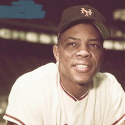
Joe DiMaggio, Ted Williams, and Stan Musial (among many others) identified him as the greatest player each had ever seen. Before Willie Mays, only Babe Ruth had been as uniquely gifted and universally beloved, and it is possible that the game, or the world of sports beyond, shall never see his like again. As baseball scribe Ray Robinson once wrote, “It's possible that no athlete in any sport can ever again mean to us what Willie Mays once meant."

Tormented by personal demons that once drove him into a sanitarium, Ty Cobb played the game of baseball with an anger and contentiousness never manifested by any other player in the history of the sport. Cobb's sense of purpose and will to excel made him the greatest player of his era.
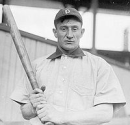
One of the first five players elected to the Baseball Hall of Fame, Honus Wagner is considered by some baseball historians to be the greatest all-around player in the history of the game. A versatile athlete who played every position but catcher during his 21-year career, Wagner was the dominant player of his time, capturing eight batting titles over a 12-year stretch and leading the National League in numerous other statistical categories as well during the first decade of the 20th century. One of Wagner's greatest admirers was New York Giants longtime manager John McGraw, who said of The Flying Dutchman, "He was the nearest thing to a perfect player, no matter where his manager chose to play him."
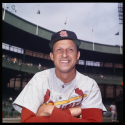
Greatly admired and respected by everyone in and around baseball, Stan Musial was one of the most popular players to ever don a major league uniform. Since big league ball wasn't played any further west than the city of St. Louis until the Dodgers and Giants moved to California in 1958, Musial was a hero to virtually every young boy who lived beyond the banks of the Mississippi River during the 1940s and 1950s. The Cardinal outfielder's warm, unpretentious, and easy-going manner also made him a favorite of teammates and opponents alike. Musial's popularity was further enhanced by the greatness he displayed on the ballfield – a greatness that enabled him to win seven batting championships and three National League Most Valuable Player Awards during his 22-year career with the Cardinals.


Considered by many to be the greatest right-hander in baseball history, Johnson was the hardest thrower of his time. He was a phenomenally successful pitcher on often terrible Washington Senators' teams. As a veteran, he anchored the only Senators' World Series winning club, in 1924. He and Christy Mathewson were the first pitchers inducted into the Hall of Fame. He was known as the "Big Train” and in later years, upon seeing Bob Feller throw his hard one, Johnson admitted that he had thrown harder in his day.
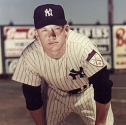
A series of debilitating injuries prevented Mickey Mantle from ever fully living up to the enormous potential he displayed when he first joined the New York Yankees in 1951. Nevertheless, even at less than 100 percent, Mantle had a brilliant 18-year career with the Yankees that clearly established him as the greatest switch-hitter in baseball history, and as one of the most exceptional players ever to play the game.
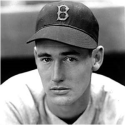
"They can talk about Babe Ruth and Ty Cobb and Rogers Hornsby and Lou Gehrig and Joe DiMaggio and Stan Musial and all the rest, but I'm sure not one of them could hold cards and spades to Williams in his sheer knowledge of hitting. He studied hitting the way a broker studies the stock market, and could spot at a glance mistakes that others couldn't see in a week." - Carl Yastrzemski
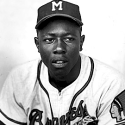
Hank Aaron is one of the most important American sports figures of the twentieth century, one who belongs to that rare class of athletes whose accomplishments on the playing field resonate in the world beyond – whose feats not only rewrite the record books, but also help to reshape attitudes and redefine social norms. While his predecessor Jackie Robinson first blazed a trail for black athletes by breaking baseball’s color barrier in 1947, it was Aaron who reached the very summit of the sporting world by overtaking the immortal Babe Ruth to become baseball’s all-time home run leader in 1974. That Aaron was able to break one of the most hallowed and long-standing records in sports is phenomenal in and of itself; as Aaron closed in on home run number 715, Sports Illustrated likened his passing the Babe to Neil Armstrong’s moon walk. That he was able to reach such a milestone as a black American during one of the most racially explosive eras in the country’s history makes his triumph all the more significant.
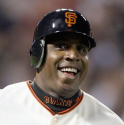
Gifted with tremendous power, speed, and natural hitting ability, Barry Bonds became the most celebrated player of his generation. Still, a huge cloud hangs over many of his greatest achievements due to allegations made that he used performance-enhancing drugs.
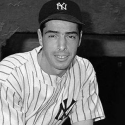
The most complete player of his era, Joe DiMaggio is considered by most baseball historians to be the first true "five-tool" player ever to grace a major league ballfield. In fact, prior to leaving the game for three years to serve in the military during World War II, DiMaggio may well have been the greatest all-around player in baseball history. His tremendous ability, along with the stylish grace and elegance he exhibited while patrolling centerfield in Yankee Stadium for 13 seasons, eventually enabled The Yankee Clipper to reach iconic-like status, turning him into a true American hero.

One of the greatest centerfielders in baseball history, Tris Speaker is considered by many baseball experts to be the finest defensive outfielder ever to play the game. Over the course of 22 major-league seasons, Speaker established numerous fielding marks not likely to be broken. In addition to holding the American League record for most career outfield putouts (6,706), he owns the major-league marks for most career outfield assists (449) and double plays (139). More than just a great fielder, Speaker also excelled both at the plate and on the basepaths, rivaling Ty Cobb as the finest all-around player in the game throughout the second decade of the 20th century. During that 10-year period, Speaker batted well over .300 all but once, topping the .340-mark on five separate occasions. His league-leading .386 batting average in 1916 broke Cobb's nine-year stranglehold on the A.L. batting title. Speaker also finished in double-digits in triples in nine of those years, collected more than 40 doubles four times, scored more than 100 runs four times, and stole more than 30 bases six times. His 792 career doubles remain the all-time major-league record.
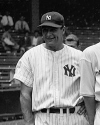
Quiet and reserved, Lou Gehrig rarely had the spotlight all to himself during his 14 full seasons with the New York Yankees. Gehrig remained in the background his first 10 years while the far more colorful and gregarious Babe Ruth consistently grabbed the headlines in the New York newspapers. He then spent his final few seasons taking a backseat to the more charismatic Joe DiMaggio. But, when all was said and done, Lou Gehrig was one of the very greatest players in baseball history, and the man who is generally considered to be the premier first baseman in the history of the game.
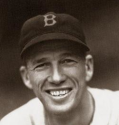
Noted author and baseball historian Bill James suggests, "What argument, if any, could be presented against the proposition that Lefty Grove was the greatest pitcher who ever lived?"
Considered by many baseball historians to be the greatest lefthanded pitcher in the history of the game, Lefty Grove dominated his era the way few men have. Excelling during the 1920s and 1930s, a period known for its offensive productivity, Grove won more than two-thirds of his lifetime decisions, annually led his league in both earned run average and strikeouts, and posted the second-best adjusted ERA of all time (behind only Pedro Martinez). Armed with a blazing fastball and a fiery temperament to match, the tall, lanky lefthander accomplished all he did despite making his first major league appearance at 25 years of age.
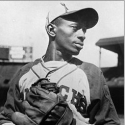
The most colorful and charismatic player in the history of black baseball, Leroy "Satchel" Paige reached legendary status during his 22-year playing career in the Negro Leagues. A prognosticator, an entertainer, a philosopher, and, most importantly, a phenomenal pitcher, Paige mesmerized and frustrated opposing batters for more than two decades with his wide assortment of pitches that included his Hesitation Pitch, Bat Dodger, Hurry-Up Ball, Midnight Rider, Jump Ball, and Midnight Creeper. Generally considered to be the greatest pitcher in Negro League history, Paige found himself unable to compete in the Major Leagues until 1948, when he was already 42 years of age. Nevertheless, he previously made enough of an impression on major league hitters during barnstorming tours to gain widespread recognition among them as one of the toughest pitchers they ever faced.

Perhaps the finest all-around player in Negro League history, Oscar Charleston rivaled Josh Gibson as black baseball's premier slugger and Cool Papa Bell as its top centerfielder during his 28-year playing career that began in 1915 and ended in 1942. An extraordinarily-gifted five-tool player, Charleston drew favorable comparisons to major league baseball's Tris Speaker as a fielder, Ty Cobb as a baserunner, and Babe Ruth as a hitter during his playing days. Many people who saw Charleston play insisted there was never anyone better.
